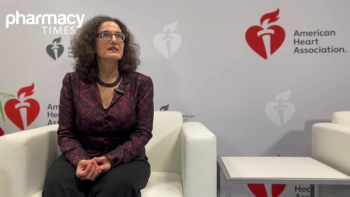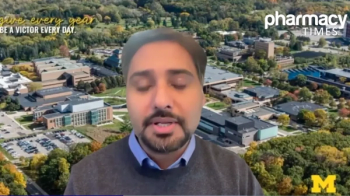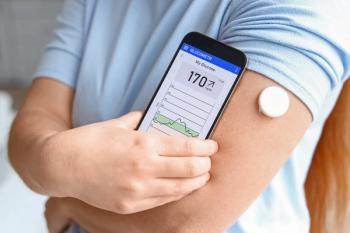
Q&A with a Pharmacy Outcomes and Healthcare Analytics PGY-2 Pharmacy Resident
Ashir Shumonov, PharmD, talks about his residency at the Veterans Affairs Veterans Integrated Service Network 17 pharmacy benefits manager.
Ashir Shumunov, PharmD, is a post-graduate year 2 (PGY-2) pharmacy outcomes and health care analytics pharmacy resident at the Veterans Affairs (VA) Veterans Integrated Service Network 17 (VISN 17) pharmacy benefits manager (PBM) in Temple, Texas. The VISN 17 PBM oversees 7 VA facilities in Texas. He grew up in Brooklyn, New York, and obtained his PharmD degree from St. John’s University. He then moved on to complete a post-graduate 1 (PGY-1) managed-care residency at the Capital District Physicians’ Health Plan (CDPHP) in Albany, New York. After completing his PGY-2 program, he hopes to continue to work with data to develop pharmacoeconomic and population health initiatives.
Question: Why did you decide to pursue a PGY-1 and PGY-2 pharmacy residency?
Answer: As a student, I was not familiar with what managed care or a pharmacy outcomes and health care analytics residency would hold. In my last year of pharmacy school, I was, like many students, struggling to solidify a career path. Six years can go by quickly.
What ultimately helped me decide were my advanced pharmacy practice rotations (APPEs). It was during my managed-care APPE rotation that I gained an appreciation for population health. I liked the idea that I can use my knowledge as a pharmacist to affect positive change in hundreds if not thousands of patients at a time, all the while staying on the cutting edge of pharmacy to effectively manage care. This led me to complete a PGY-1 in managed care, which further solidified these notions.
During my managed-care residency, I had the opportunity to work with a great team and participate in a variety of activities, such as presenting to a [pharmacy and therapeutics] committee, working on formulary and policy changes and developing clinical criteria and provider resources. I also had the opportunity to work with the data analytics team and developed an appreciation for the impact of good data on practically every aspect of health care.
It became very clear that to provide good, actionable data, 1 must be both clinically and technically literate. When I learned about a PGY2 program that would help me to develop these 2 literacies with arguably the richest health care data source available, it seemed like a clear choice. With the increasing costs and utilization of health care, a clinician trained in data analysis, pharmacoeconomics, and population management is a clear asset to any health care organization.
Q: What is the structure of your residency program?
A: My PGY-2 outcomes and analytics program has space for 2 PGY-2 residents. We work on many projects together and share an office in the VISN PBM building in Temple, Texas. The VISN that we work with, VISN 17, is responsible for 7 health systems in Texas. There are 2 other similar programs available in VISNs 15 and 21.
The program is structured with 6 primary longitudinal rotations: data and analytics, leadership, formulary management, population management, service and policy development, and quality improvement/research. There is a 4-to-6-week focus period for the longitudinal rotations in the beginning and toward the end of the program with adequate support from preceptors throughout.
Projects are assigned depending on the current rotation/business needs. There are also elective periods available, where residents can focus on previous rotations or work within a clinic with 1 of the VISN 17 facilities. We are also responsible for helping to precept students or PGY1 residents completing a data elective for 2-to-4-week rotations.
Q: What are your day-to-day tasks?
A: Day-to-day tasks depend on the current rotation and business need. Daily tasks can involve responding to data requests from facilities and other team members or working on projects, such as developing criteria for use and template documents, precepting, and presenting continuing-education and leadership trainings. We also work on completing a quality improvement research project and facilitating committee and team meetings.
Q: What are the benefits of completing a PGY-2 residency? What about the disadvantages?
A: As mentioned earlier, there are many benefits to being a clinician with a data background. PGY2 residents are given autonomy with sufficient support from preceptors while training within the VA database. Working with the VA database provides distinct advantages, as you have access to the entire spectrum of a patient’s health care experience. Therefore, many of the previous PGY2 residents have chosen to continue their career with the VA. However, there are still opportunities available in the private sector as well.
One disadvantage with completing this PGY2 includes a lack of direct patient care. This can be remedied, however, as residents have the option to complete a clinic rotation, and some previous residents currently have jobs with a part-time clinic component. Another disadvantage that occurs is due to our large regional influence, which requires many meetings to be virtual and may require some adjustment.
A consideration to make with completing any PGY2 is financial. You will be making a smaller salary then you could be for another year, and because there are so few of these PGY2 programs available, you may have to [change] states, which is an additional expense.
Q: How did you decide your PGY-2 program was the right fit for you?
A: Coming from the managed-care setting, I had an appreciation for how important good, actionable data can be for a health care organization. My research project offered me the opportunity to work with our data analytics team and get some exposure to working with data but also left me wanting more.
This program offered me exposure to a large health care system with one of the most robust health care databases available. The team here at VISN17 is easy to work with and has created a culture of growth, leadership, and exploration that helped me solidify my decision that it was a good fit for me.
Q: What opportunities does a PGY-2 pharmacy outcomes and health care analytics resident have after completion of the program?
A: Many of the previous residents from my program and similar programs have stayed on with the VA with a VISN or a national VA PBM position. However, a pharmacist with an understanding of pharmacoeconomics and data analytics would be able to find opportunities within a multitude of health care organizations (health systems, managed-care organizations, consultant companies, and the pharmaceutical industry).
Q: What advice do you have for students looking to pursue a residency in health economics and outcomes research?
A: If you have an interest in analytics, pharmacoeconomics, and population health, align those interests with your choice of PGY1 program. Look for PGY1 programs that offer rotations or potential electives in data analytics, population health, formulary management, or informatics to gain insight into these areas. Although having VA experience will help, I started this program without it, and I found that it was beneficial to me to bring a new perspective on how to approach certain issues.
Newsletter
Stay informed on drug updates, treatment guidelines, and pharmacy practice trends—subscribe to Pharmacy Times for weekly clinical insights.
















































































































































































































